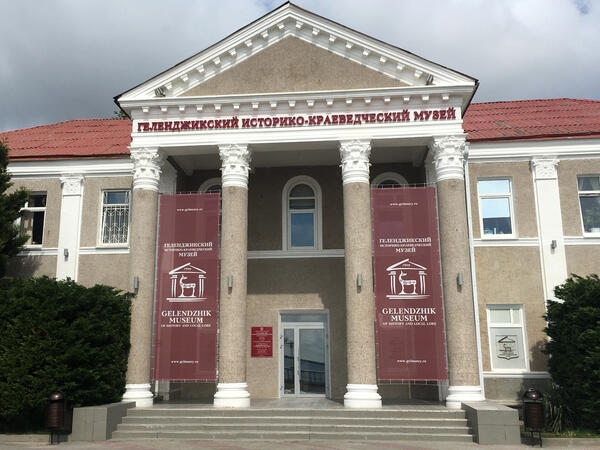The founding date of the Gelendzhik Museum of History and Local Lore is considered July 18, 1909, when the dacha owners of Solntsedar (Thin Cape) solemnly opened the Museum of Natural History. It was housed in a small room of the eminent dacha owner, State Councilor Mikhail Mikhailovich Reinke.
In 1920, the museum received a new name — the Museum of Nature and History — and moved to a new building at 24, Lenin Street. In the 1930s and 1940s, the museum was located in a building at 7, Lenin Street, which was destroyed during the Great Patriotic War. From 1945 to 2003, the museum found a new home at 23, Lenin Street.
In 2003, the museum received another building at 1, Ostrovsky Street. The building was originally built for the theater, and turning the theater stage into an exhibition hall, and the dressing rooms into a storage facility was not an easy task and took a lot of time.
The museum also includes the House-Museum of V.G. Korolenko in Dzhanhot and “Battery No. 394 of Captain A.E. Zubkov” between Kabardinka and Novorossiysk.
Gelendzhik is known for its unique nature and climate, flora and fauna. All these features are displayed in museum collections that include rocks, insects, birds, animals and inhabitants of the Black Sea. The museum also has interesting archaeological collections: objects of dolmen culture dating back to the 3rd–2nd millennium BC; the period of antiquity — the 6th–5th centuries BC (on the shore of the bay was the ancient Greek settlement of Torik). The exhibits of the Middle Ages showcase the original local Adyghe culture. The Caucasian War is represented by exhibits reminiscent of the events that took place in the Gelendzhik fortification, founded in 1831, including a fortification model made by Russian artist Alexander Zavaliy. The furniture collection of the late 19th and early 20th centuries gives the visitor an idea of how the life of summer residents looked like at that time.
In 1920, the museum received a new name — the Museum of Nature and History — and moved to a new building at 24, Lenin Street. In the 1930s and 1940s, the museum was located in a building at 7, Lenin Street, which was destroyed during the Great Patriotic War. From 1945 to 2003, the museum found a new home at 23, Lenin Street.
In 2003, the museum received another building at 1, Ostrovsky Street. The building was originally built for the theater, and turning the theater stage into an exhibition hall, and the dressing rooms into a storage facility was not an easy task and took a lot of time.
The museum also includes the House-Museum of V.G. Korolenko in Dzhanhot and “Battery No. 394 of Captain A.E. Zubkov” between Kabardinka and Novorossiysk.
Gelendzhik is known for its unique nature and climate, flora and fauna. All these features are displayed in museum collections that include rocks, insects, birds, animals and inhabitants of the Black Sea. The museum also has interesting archaeological collections: objects of dolmen culture dating back to the 3rd–2nd millennium BC; the period of antiquity — the 6th–5th centuries BC (on the shore of the bay was the ancient Greek settlement of Torik). The exhibits of the Middle Ages showcase the original local Adyghe culture. The Caucasian War is represented by exhibits reminiscent of the events that took place in the Gelendzhik fortification, founded in 1831, including a fortification model made by Russian artist Alexander Zavaliy. The furniture collection of the late 19th and early 20th centuries gives the visitor an idea of how the life of summer residents looked like at that time.

